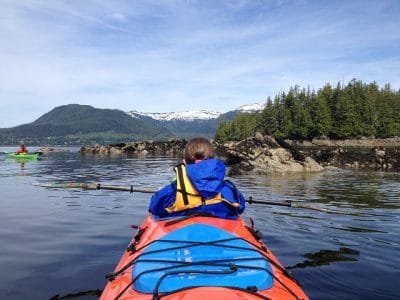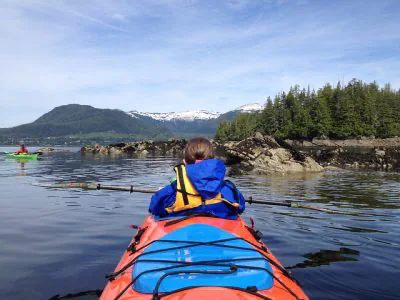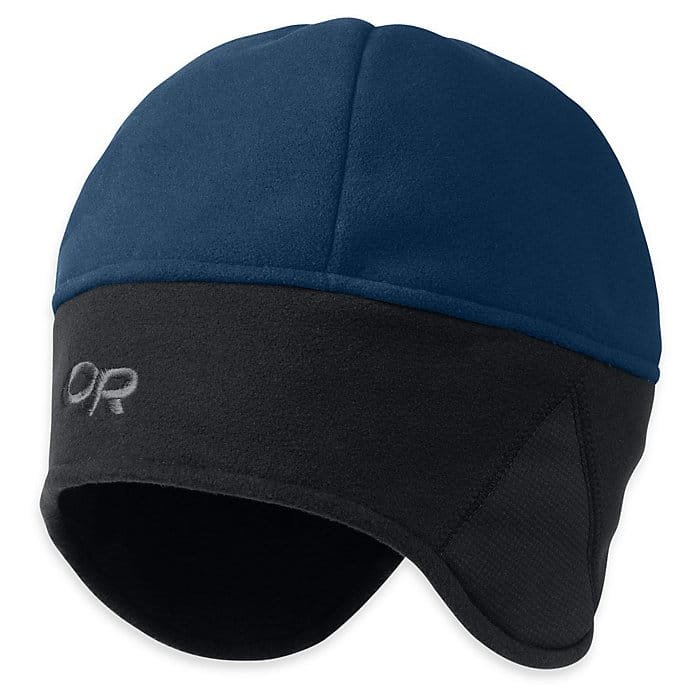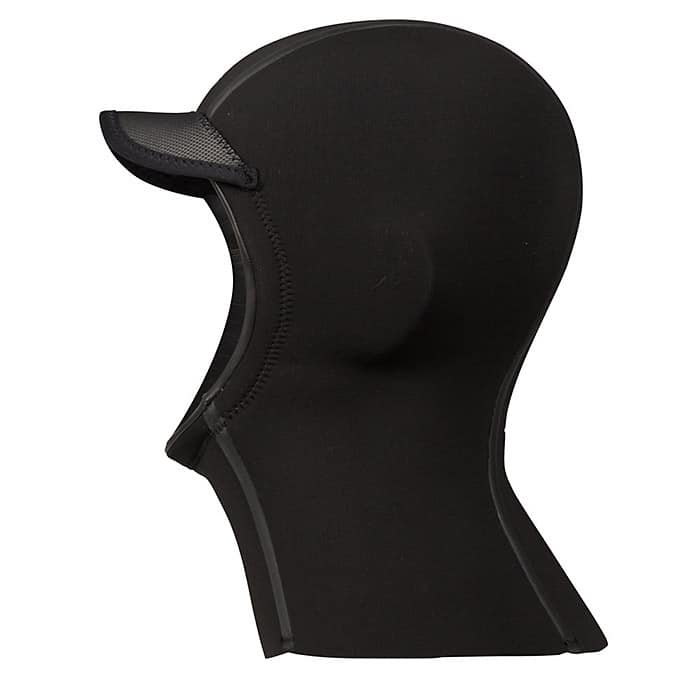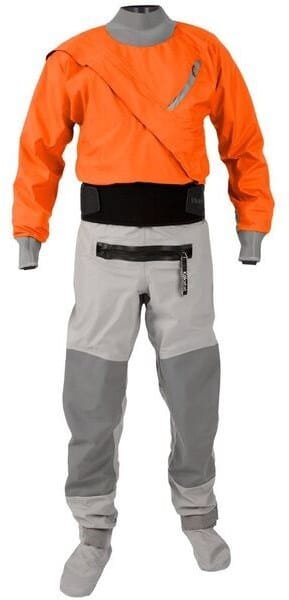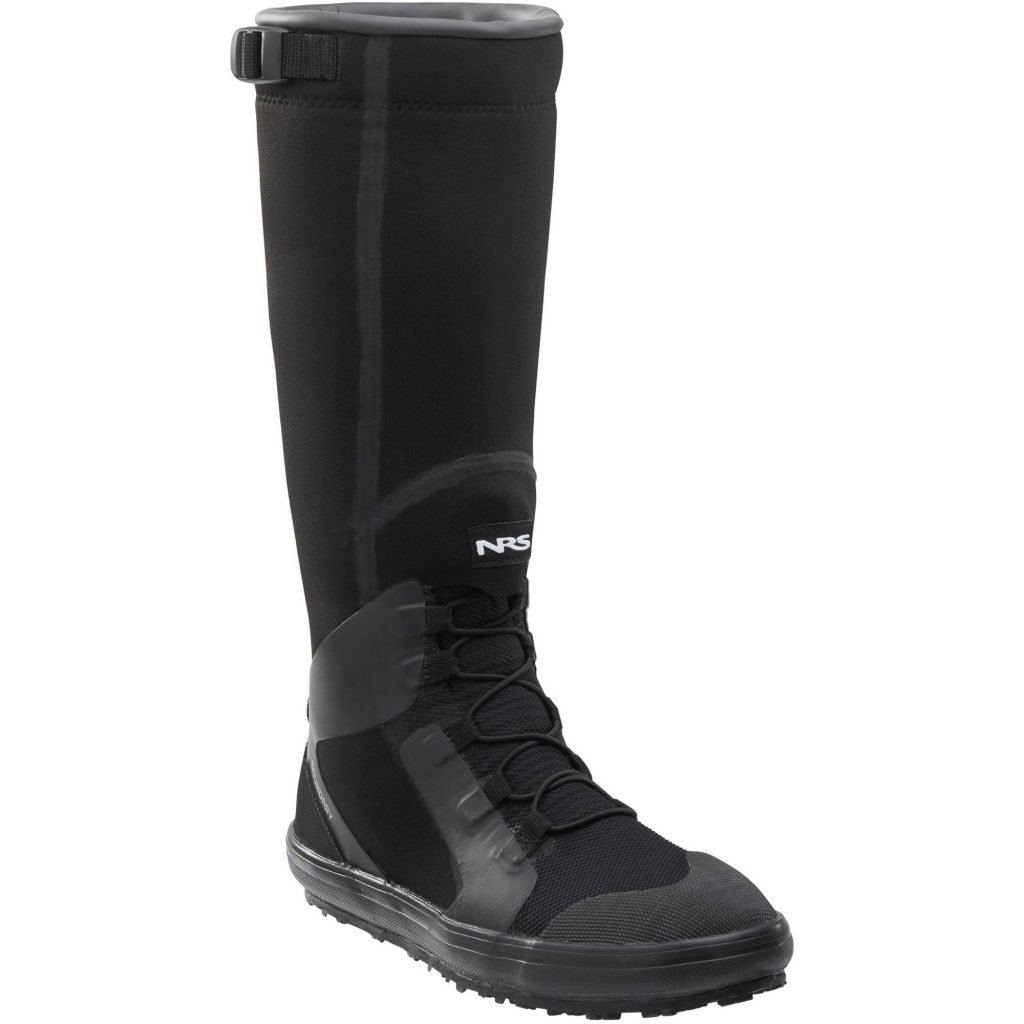If you’re looking to hit the water when the mercury drops, you best come prepared. Cold weather paddling can be a fantastic experience, but staying warm and dry in frigid temps requires having the right gear on hand at all times.
We know how important it is to layer properly when you’re padding in cold temperatures, so we’ve created this guide to help you fine-tune your clothing system. In this article, we’ll walk you through the nitty-gritty details of layering for cold weather paddling so you’re always prepared for the conditions you’ll face.
Up next, we’ll give you a layer-by-layer introduction to everything you ought to wear while on the water. While the specific pieces of gear that you’ll sport in your boat or on your SUP will depend on the current weather conditions, our guide should give you the knowledge you need to get started.
Let’s get to it!
In This Article
Basics of Cold Weather Paddling Apparel
Before we dive into the details of what you should wear while paddling, we should discuss a few key concepts to lay the groundwork for our discussion. Here’s what you need to know:
What Is Cold Weather Paddling?
First and foremost, we ought to discuss what “cold weather paddling” really means.
In reality, dressing for paddling is all about dressing for the water temperature, not the air temperature. Since capsizing in very cold water can be exceptionally dangerous, the key is to dress so that you’ll be okay in the water until you manage to get back on your board or in your boat.
What does this mean for your paddling, you might ask?
Well, any time the water temperature is less than about 60ºF (16ºC), you’ve entered into “cold weather” paddling territory. In fact, the American Canoe Association actually recommends that paddlers wear either a wetsuit or a drysuit in these conditions, even if the air temperature is quite mild.
We’ll discuss precisely what you should wear for cold weather in a bit. But, it’s important that we’re all on the same page about what cold weather actually means.
Principles of Cold Weather Paddling Apparel
Now that we’ve covered what cold weather refers to in paddling, let’s talk a bit about some of the key tenets behind dressing for shoulder-season adventures on the water.
Here are three general principles to consider as you dress for your cold weather paddling adventures:
- Cold Weather Season Is PFD Season. Although we’re proponents of wearing your PFD whenever you’re on the water, wearing your life jacket at all times in cold water is of the utmost importance. That’s because capsizing in cold water can lead to a life-threatening condition known as cold water shock. In these situations, wearing a PFD at all times could quite literally save your life. Oh, and PFDs are great insulators, so they help you stay warm, too, as an added bonus. What’s not to love?
- Cotton Is A No-No. In the world of paddling, cotton just doesn’t fly. While cotton is a great fabric for towels, t-shirts, and casual apparel, it has no place in your paddling clothing system. Since cotton actually makes you colder when wet, it offers no insulating value for you if you end up in the water—not ideal.
- Layers, Layers, Layers. Dressing for cold weather paddling is all about layering so that your body can adapt to the current conditions. If you’re in cold conditions this normally includes wearing at least one insulating layer and either a drysuit or a pants/jacket combo. Doing so helps increase the versatility of your clothing so that you can stay warm and dry at all times.
Regardless of if you’re heading out for a short springtime paddle on your local pond or you’re prepping for a kayaking trip to the Antarctic, following these three principles will set you up for success on the water.
🌞 Enjoying this article? Don’t miss our other comprehensive article with all the latest info about warm weather paddling apparel! 🕶
Must-Have Cold Weather Paddling Apparel
At this point, you should have a good understanding of when you should think about dressing for cold weather paddling, as well as some of the basics of staying warm in chilly conditions.
So, in this section, we’ll provide some insight into your must-have pieces of paddling apparel for all your future adventures. Moving from head to toe, we’ll discuss all of the various pieces of gear you should consider on your next cold weather paddle.
Hats
You’ve probably heard the old adage that you lose 90% of your body heat through your head. While this old adage isn’t actually true, it came about as a result of how people tend to dress in cold conditions.
Think about it: If you’re cold, what do you do? You bundle up in warm jackets, put on fuzzy socks, and call it a day. But, doing so neglects one major part of your body: your head. As a result, while our head isn’t naturally predisposed to lose more heat than any other part of our body, it does get cold when left uncovered.
Moral of the story? Wear a hat—especially while paddling in cold weather.
Thankfully, you have plenty of hats to choose from for your adventures.
Whether you prefer to kayak or paddleboard, it’s hard to beat a classic fleece hat, like the Outdoor Research Wind Warrior, on the water. Fleece is excellent at keeping you warm, even when wet, so fleece hats have long been a staple of cold weather paddling gear lists.
Alternatively, for very frigid temperatures or especially windy environments, you might prefer a hat with more comprehensive coverage.
In these situations, the protection afforded by the NRS Storm Hood might be more appropriate. We particularly like models such as the Storm Hood because they come with a thin layer of neoprene to insulate you from the cold. The Storm Hood also has a flexible bill, too, so it helps to keep water off your face when paddling in wet conditions.
Bodywear
As we’ve already mentioned, dressing for paddling is all about layering for the conditions.
However, when it comes to your bodywear, you have a major decision to make; namely, do you want to go the jacket and pants route, or should you wear either a wetsuit or a drysuit, instead?
Let’s take a look at the advantages and disadvantages of each method so you know what’s best for your unique needs.
Jacket & Pants
The first layering method you can choose, the jacket and pants method, is, well, exactly what it sounds like.
With this system, you’ll wear a pair of waterproof pants as well as a separate waterproof jacket on top of your insulating layers, which could be fleece jackets, pants, and the like, depending on the conditions. The idea here is that you’re effectively mimicking the type of layering system you might use while, say, hiking, but with purpose-built gear that’s designed for the water.
The primary advantage of this system is the fact that it’s quite convenient. Wearing separate pants and jackets allows you to nip off to the loo whenever you need to without having to worry about zippers and the like on your drysuit.
The downside, however, is that even the most waterproof of pants and jackets won’t keep you dry if you capsize. Yes, this system will likely keep you dry if you’re paddling through a storm, but as soon as you flip your boat or fall off your board, your pants and jacket will fill up with water.
So, this system is best for shorter, more casual paddles than for long expeditions.
That being said, you have quite a few paddling pants and jackets to choose from if you want to go this route.
The Kokatat Hydrus Tempest Pants are a fan-favorite because they have integrated socks that help to keep your feet dry, even if you end up wading through water. For added warmth and waterproofing, however, the Kokatat Hydrus Whirlpool Bibs are hard to top.
As far as jackets go, either the NRS High Tide Jacket or the Kokatat Hydrus Tempest Paddling Jacket are solid choices. You’ll notice that both of these jackets have hoods, which are generally ideal for cold weather use. Although you should have a separate insulating hat, the hood on your jacket can make a big difference in your comfort when the temperatures drop.
Drysuit vs Wetsuit
If you’re looking for more comprehensive protection from the water and the cold, you’ll either need a drysuit or a wetsuit. These two terms get confused quite frequently, but it’s important to note that drysuits and wetsuits are not the same thing.
In fact, wetsuits are made from neoprene, which is a relatively affordable fabric that’s designed to insulate you from the cold. Neoprene accomplishes this feat by trapping water between your skin and the neoprene itself. Then your body heat warms up the water, keeping you toasty warm in the process.
Since water needs to be trapped in between your skin and the wetsuit itself, you generally shouldn’t wear anything besides underwear and maybe a lightweight top under your wetsuit. Doing so will actually make it less effective at keeping you warm.
Wetsuits like the NRS Steamer 3/2 Wetsuit or the NRS Radiant 4/3 Wetsuit (for very cold water) are ideal when you’re okay with being wet since, well, they can’t keep you completely dry.
For many shorter paddling outings, neoprene is generally a cost-effective choice. In very cold climates, however, you may want to use your wetsuit as a base layer and then place a jacket on top for added warmth.
However, for longer paddling trips or exceptionally cold conditions, drysuits are likely the superior option. Unlike wetsuits which allow you to get wet, drysuits, as the name suggests, keep you dry.
They accomplish this task through the use of waterproof-breathable membranes, like Gore-Tex, which keep water at all costs. You’ll still want to wear insulating clothing underneath a drysuit, but the point is that your drysuit should keep you dry on the water.
The downside to drysuits is that they can be pretty darn expensive.
As a general rule, expedition drysuits with Gore-Tex layers and hoods, like the uber-popular Kokatat Gore-Tex Drysuit, tend to be a bit pricier. But, in terms of quality, they’re hard to beat.
For a slightly more affordable option that still gets the job done, however, the Kokatat Hydrus 3L Meridian Dry Suit, which uses Hydrus fabric instead of Gore-Tex, is a solid choice.
Gloves
Fact: No one likes cold hands and you can’t really keep your hands in your pockets when paddling. So, while you’re paddling, you’ll want to make sure you have a way to keep your digits warm at all times.
As you can imagine, keeping your hands warm in cold, wet, and windy conditions on the water is a challenge. Therefore, it’s generally best to opt for neoprene gloves, which are excellent at insulating you from the cold.
If you’re kayaking in moderately cold temperatures, a pair of pogies. might be what you need. Pogies wrap around your paddle and create a little insulated chamber from the cold for your hands as you cruise along the water. So, they’re a nice option for when you might need your dexterity in moderately cold conditions.
For paddleboarding or very cold climates, however, neoprene gloves and mitts are the way to go. Depending on the conditions, you might consider the lightweight NRS Maverick 2mm Gloves. Or, for those particularly frigid temps, the thick and cozy NRS Toaster 3.5 mm Mitts are a go-to.
Shoes
Last but not least, we have paddling shoes.
Unless you’re paddleboarding in very warm climates, it’s quite possible that you’re already accustomed to wearing shoes on the water. But, for cold weather paddling, the number one priority when it comes to shoes is keeping your feet warm.

As a result, neoprene booties are hard to beat. For cold climates, a set of high-top neoprene booties like the Kokatat Nomad Shoes is a nice option. These boots are particularly awesome because they have double-lined neoprene for warmth and an extra-thick outsole for added protection on rough terrain.
Alternatively, when the temperatures really drop, the super warm NRS Boundary Boots are a sure bet. They have thick neoprene around the foot and the lower leg for increased warmth in all weather conditions.
The Verdict
At the end of the day, staying warm and dry while on the water during the shoulder season or the winter is all about coming prepared with the right clothing. Layering for cold weather paddling starts with knowing what gear you need for your adventures and then building a system that works for you.
See you on the water!
